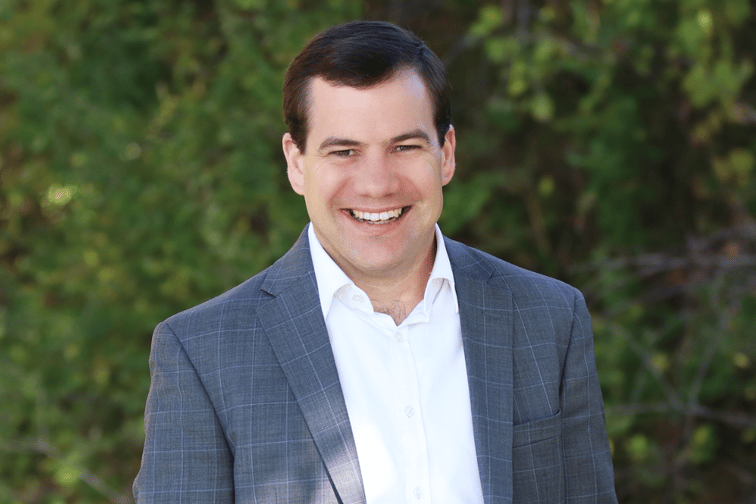

Growing up with a father who was an underwriter at Lloyd’s of London and a grandfather who ran a large P&C agency might set up a clear professional path to follow, or it just as easily might send you in an opposite direction. For Albert “Nickel” Lietzau V, CPCU, it could have gone either way.
“You either fall into this industry flat backwards or you’re born into it,” he said. For Lietzau, who is now an account executive at Oxford Risk Management, it was the latter. “I got out of college and didn’t have my heart set on a job, so when Dad said, ‘hey, come on board’, I thought, ‘why not give insurance a try?’”
Starting at the ‘family shop’ – an independent insurance agency – in 2010 helped him learn the industry from the inside out. Lietzau could dabble in various aspects of the business, from technical policies and forms, to client relations. Then, during the pandemic, his father’s firm merged with a larger regional firm. Lietzau’s stint there, however, was short-lived.
“In 2022, I came over to Oxford Risk Management Group, jumping into the captive space,” he said. “We get to do things that normal traditional carriers can’t do since we’re helping form private insurance companies.”
Specifically what makes Oxford unique is that it has the “trifecta”: being a captive manager, having its own A-rated paper, and also being a reinsurance facility. That combination allows it to tailor-make solutions that might not be feasible with traditional insurance products while also giving clients a financial upside for sound risk management. Self-insurance is a growing trend among businesses, especially in companies looking to pivot from traditional insurance models. Places like Oxford Risk Management Group can help businesses assess if the model is right for them.
When asked about the process a business takes to form a captive Lietzau stated: “The first step is education. Many of these business owners haven’t heard of the concept of a captive or have preconceived notions on what a captive really is. Forming your own insurance company instead of paying a third-party insurer can be mind-blowing to business owners once they grasp the risk-reward.”
After education, the process dives into analysis. Oxford’s team examines the client’s claims history, losses, and approach to risk management. “Let’s figure out where you currently are,” he said. “What’s your claims history? What caused those losses? How have you improved? What’s your overall risk management strategy?”
The results of this analysis could dictate the feasibility of self-insuring. If a business has been paying substantial premiums but has had minimal losses, they’ve inadvertently been boosting the profits of traditional insurance companies, which, Lietzau playfully notes, are “not non-profits, by the way.”
But Oxford’s role doesn’t end with education and underwriting (this combination is called ‘feasibility’ in the captive insurance industry); next comes coverage design. “At the end of the day, properly manuscripted policy forms should get comparable, if not better, insurance to what they had before. But often bespoke coverage can be more comprehensive for what the business needs to manage their risk compared to ‘off the shelf’ insurance products.” Lietzau added.
Oxford is not just a consultant but a manager of captives, so the next step is implementation. “We take it from soup to nuts,” Lietzau said. It guides businesses through licensing and even manages the captive, ensuring it matures into an active, licensed insurance entity.
When a captive implementation is complete, a client joins Oxford’s vast reinsurance network of clients who share risk with each other. When asked about the type of clients, “We work with businesses all over the country in a wide-variety of industries, but all are committed to loss control, safety and simply, solid risk management. That has resulted in a very good loss ratio, and we’re not trying to muddle that,” added Lietzau. Before anyone joins the Oxford fold, they must undergo a stringent underwriting and due diligence processes. Akin to “Top Gun” – only the best of the best make the cut.
“Our CEO, David DiMayo, describes a key trait that we look for in prospective clients: those with ‘the risk management mentality’,” Lietzau said. Starting with that trait and the desire to rethink insurance, combined with a relationship founded on trust creates a solid foundation for great financial opportunity.
“The relationships with not only the brokers who bring us their insureds, but also our long-term partnerships with the insureds themselves is paramount to a successful insurance program,” he explained.
These words ring true in an industry where trust is as valuable as currency. In the insurance sector, relationships aren’t just transactional - they evolve over time, transitioning from simple policy discussions to detailed consultations about business risks and growth opportunities.
“When someone comes on board to Oxford, we become a true business partner,” Lietzau said. “We are helping business owners better manage the risks in their business for their own success because, at the end of the day, if they are successful in managing those risks to their business, they get to keep a good portion of their premium back as profit to themselves.”
